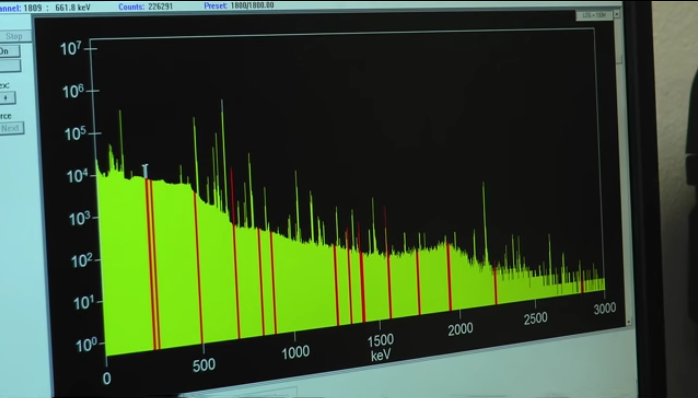Researchers at the Nuclear Security Science and Policy Institute (NSSPI) in conjunction with the Department of Nuclear Engineering at Texas A&M University, and Professor Charles M. Folden III at the Cyclotron Institute, have developed a new method in nuclear forensics research to determine the reactor origins of weapons-grade plutonium. This methodology gives investigators and other government entities the ability to track the production source of black market nuclear materials, specifically plutonium.
“The goal is forensics,” said Professor Sunil Chirayath, the project’s principal investigator and interim director of NSSPI. “If somebody is smuggling plutonium to the United States and if it is confiscated, we need to attribute who did this and we have to put together several pieces of this puzzle. One of the pieces of the puzzle we specifically deal with is determining which type of nuclear reactor produced the confiscated plutonium.”
In the neutron spectrum of nuclear reactors, Chirayath explains that there are two extremes: thermal reactors and fast reactors, with some variants between. Based on a number of variables, different reactor types leave different signatures in the plutonium that is created from spent nuclear fuel. Once investigators are able to determine what kind of reactor the material came from, it becomes a game of elimination between the different countries where these reactor types operate. Using this information, government agencies will look at possible countries in which the material could have been produced and attempt to track how the plutonium may have been transported and illegally acquired.

According to Chirayath, the method for tracing the source of the nuclear material shares some similarity with modern criminal forensics. In the same way criminals might leave fingerprints or DNA evidence at a crime scene, the process for creating the weapons grade plutonium leaves its own type of characteristics on the nuclear material.
“Some specific elements, when you separate plutonium, go with that plutonium as trace contaminants,” Chirayath said. “When you touch something you don’t leave just your fingerprint behind, you leave some characteristics behind with that print that leaves an indelible mark. We want to know if there is any trace contamination in that plutonium where these specific elements are, and we can then tell through that element where this material was created.”
The researchers use a radiochemistry process known as plutonium uranium redox extraction (PUREX) to separate the plutonium from the trace elements created from spent nuclear fuel. This process, which has been replicated at Texas A&M, makes Texas A&M the only university within recent times that has the appropriate radiochemistry lab setup to refine irradiated fuel samples through this unique process. These trace contaminants that are attached to separated plutonium through the PUREX process are isotopes that are identifiable to investigators as indicative of specific reactor types.

“There are certain isotopes that we know as trace elements that point directly to specific reactor types,” Chirayath said. “For example, Sm-150 is an isotope that is produced in a thermal reactor in a quantity 100 times greater than if this same isotope was produced in a fast reactor when normalized to plutonium production. Even if we were to somehow mess up by 10 to 20 percent in our measurements, it’s still a factor of 100, which means that if we find this isotope in an abundance as a trace element, it leads to certain identification of a thermal reactor.”
The project, which is currently in it’s fourth year, has trained six graduate students from the Department of Nuclear Engineering, three who work on the experimental PUREX process and three who work on the computational aspect of the research to model the different reactor types. According to Folden, the project has had a broader impact in helping to increase the number of students who work in radiochemistry, which is beneficial because there are so few radio-chemists in the United States. In total the project is a six-year endeavor, and the team is hoping to get the project funded for two more years, with current funding ending in August of this year. The team hopes to look at different plutonium separation processes apart from the PUREX method and to further diversify the method to identify more reactor types across the spectrum.
“I knew that the ability to use radiochemistry in our forensic research is something that has been lacking in NSSPI,” Chirayath said. “Our goal is to study this and develop a methodology using this PUREX process so that the methodology that we develop can be applied, like a technology, for forensics specialists and others to use. We set out to prove both computationally and measurement wise, that this methodology is effective. We hope it becomes the standard methodology and it can be used by anyone at the lab level.”
*This work is supported by the U.S. Department of Homeland Security, Domestic Nuclear Detection Office, under Academic Research Initiative (DNDO-ARI) Grant Award Number NSF Grant No. ECCS-1140018 and DNDO-2012-DN-077-ARI1057-02&03. The views and conclusions contained in this document are those of the researchers and should not be interpreted as necessarily representing the official policies, either expressed or implied, of the U.S. Department of Homeland Security.
